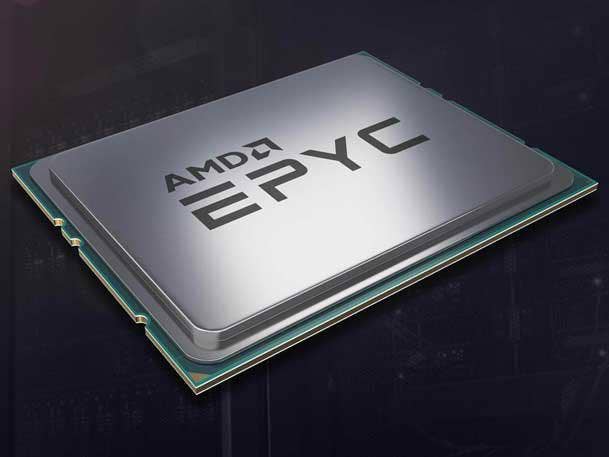AMD’s Q1 Server Gain Against Intel Was Largest Since 2006
The last time AMD saw such a large jump in server CPU shipments was when its server market share peaked in 2006 with Opteron, according to Mercury Research. However, Intel continued to reverse AMD’s share growth in the overall x86 market for a second consecutive quarter, largely thanks to entry-level CPUs.

AMD saw its largest share gain yet against Intel in the server market with EPYC processors in the first quarter, the chipmaker’s highest single-quarter gain for server CPUs since 2006.
That’s according to the latest x86 CPU market share report from Mercury Research, which said that AMD’s server CPU share grew 1.8 points to 8.9 percent, reflecting the chipmaker’s report of strong EPYC sales and Intel’s decline in Data Center Group revenue for the first quarter. That meant AMD’s server market share that quarter was 3.8 points higher than the same period last year.
Dean McCarron, president of Mercury Research, told CRN that AMD’s first-quarter server market share growth, its fastest since the second quarter of 2006, was one of the contributors to an increase in average selling prices for chipmaker. This was also impacted by AMD selling fewer low-end CPUs and more high-end CPUs.
“This explains how AMD reported in its earnings that it had record server and client revenues, even though units were down in client and server units are far from the company’s record shipments of 15 years ago,” he said in an email to CRN.
AMD claimed that it reached double-digit server market share last year, but the figure was determined by using Mercury Research’s numbers and applying it to a smaller market calculated by IDC that only includes traditional single- and dual-socket servers and not servers for network and storage.
The chipmaker saw its server CPU market share peak in 2006, going from around 5-7 percent to roughly 22 percent in only 18 months, as the chipmaker saw a massive ramp with its 64-bit Opteron processors, according to ExtremeTech. However, Intel soon fought back and regained technology leadership, leading to a mostly steady decline for AMD server CPU shipments over the following 10 years before the chipmaker started its comeback in 2017 with EPYC.
Alexey Stolyar, CTO of International Computer Concepts, a Northbrook, Ill.-based system integrator, told CRN that he doesn’t think AMD will repeat its previous rise-and-fall trajectory with EPYC because of CEO Lisa Su’s strong leadership and vision for the company. He also doesn’t think AMD will make the same mistake it did with its 2012 acquisition of SeaMicro, whose server products were killed off in 2015.
“I don’t think they had a clear vision last time,” he said. “Is Intel going to come back and have a competitive product? Sure. But at that point, you’re going to have two big players, and people are going to have to do more testing to see what product is better for them.”
The bigger question is what the rise of Arm CPU architectures in the data center may mean for both AMD and Intel, with Nvidia, Amazon, Microsoft and others moving to make Arm-based CPUs.
“I think that’s going to be a question of how well can Nvidia or whoever’s pushing Arm develop their tool sets to really enable the community for development,” Stolyar said.
While AMD saw a massive leap in server shipments and large increase in average selling prices, Intel continued to reverse AMD’s share growth in the overall x86 market for a second consecutive quarter, growing 1 point to 79.3 percent in the first quarter. It was still 5.9 points lower than the same period last year, however, reflecting AMD’s overall share growth over the last 12 months. (Mercury’s report include sales from Via, a much smaller chipmaker, but its share in the market rounds to zero in all segments but desktop.)
Intel may have lost market share in servers and in desktops, where AMD inched up by 0.1 point to 19.3 percent, but the semiconductor giant saw a large increase in shipments of entry-level CPUs like Celeron, mostly in the laptop market, where Intel grew 1 point to 82 percent.
But this meant that while Intel’s x86 CPU market share grew overall, AMD’s average selling prices were much higher than Intel’s.
“Unlike Intel, AMD did not ship more entry-level processors, but appears to have traded off volume in the entry-level for increased shipments of higher-end CPUs, particularly its ‘Renoir’ core Ryzen 5 and Ryzen 7 products,” McCarron said.